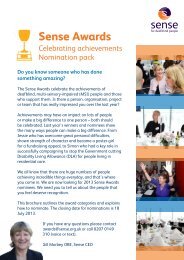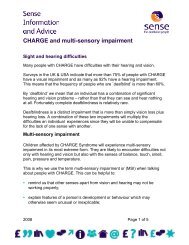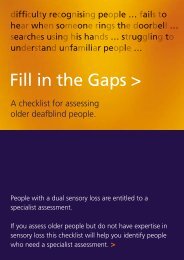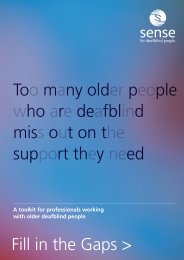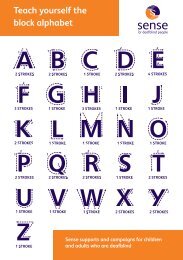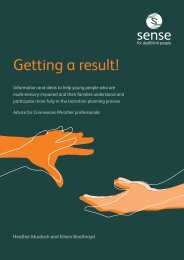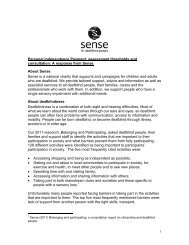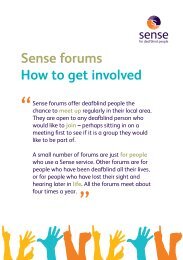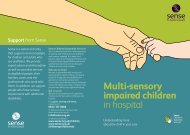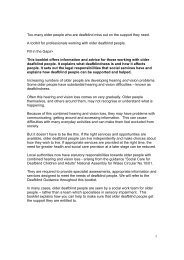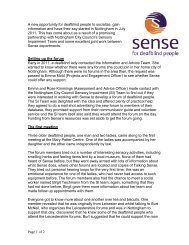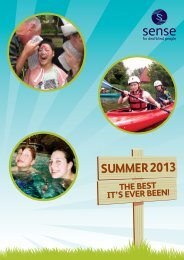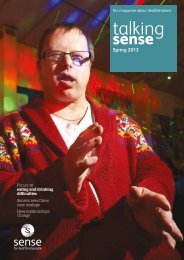MSI Unit Curriculum - Sense
MSI Unit Curriculum - Sense
MSI Unit Curriculum - Sense
You also want an ePaper? Increase the reach of your titles
YUMPU automatically turns print PDFs into web optimized ePapers that Google loves.
<strong>MSI</strong> <strong>Unit</strong> <strong>Curriculum</strong>: Phase 3Each day begins with timetable work and ends with review and collectiveworship. At Phase 3, different staff members often lead the same activity ondifferent days (Responses to routines and changes) – the security of trustedadults and familiar activities make this a positive experience for Amanda, andshe identifies and enjoys the small changes brought to an activity by differentstaff. With timetable work, especially, her preferences for one adult’s singing andanother’s conversation have over time created quite different sessions. The keyfactor here is that Amanda has been fully involved in negotiating the changes(Ownership of learning).For most Phase 3 pupils, the beginning and end of the day are the onlyconsistent daily routines. Amanda also has her site walk, although this again iscarried out by several members of staff. Two different routes are also used (‘sitewalk’ and ‘new site walk’), and the walk and review are followed by differentmassages or other activities. Amanda’s other learning sessions vary with thedays of the week.Amanda uses computer-generated symbols to receive information andmake choices – she has two differently shaped and coloured backing boards,which indicate whether we are telling her something or asking her a question(Communication). Key symbols (‘drink’, ‘I need a break’, ‘talk to me’, the day’sactivities) are kept within her reach and view. Each day on arrival she views hertimetable for the morning; after lunch, she previews the afternoon’s activities. Afolder containing the same symbols, backed on card rather than plastic, is laterused to review her day (Understanding of time and place).A key aspect of Phase 3 is pupils’ growing understanding that places, eventsand people which are not immediately accessible still exist, and can be thoughtand talked about. Photos, sound stories, symbols and artefacts (including thoseproduced by pupils) are used to anticipate or recall specific aspects of events(Conceptual development). Amanda uses micro-stories on Powerpoint andpaper to review different aspects of her arrival at school (taking her coat off, forexample) and different landmarks on her site walk. The functional links betweenpreview/review and the events themselves are emphasised whenever possible –for example, making and using a graphic shopping list.Most of Amanda’s learning activities still focus primarily on what happensduring the activity, rather than what is produced at the end of it. This focus isgradually changing, however. Food interests Amanda greatly, so currently hersnack and cookery sessions provide the most motivating end-products. She is81



